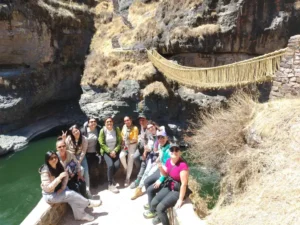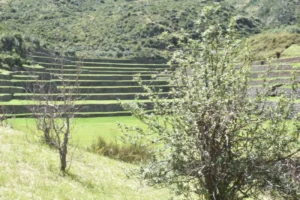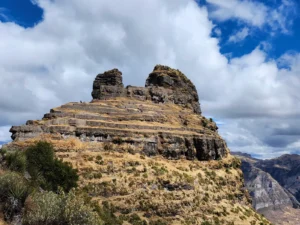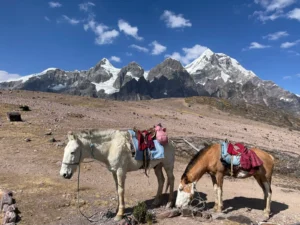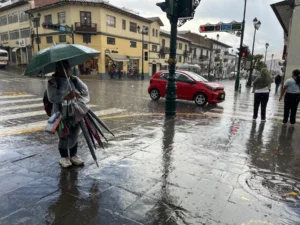Ausangate: Complete Guide to the Sacred Trek in the Peruvian Andes
Ausangate is not just a mountain. It is a whole world. A living territory, full of color, history, energy and pure nature. When you walk along its routes, you realize that every step leads you to discover something new: a lake that changes color, an animal that crosses the road, a community that welcomes you with a smile, or a hill that seems to watch over everything in silence.
This blog is your complete, optimized and easy to read guide to prepare, understand and live the Ausangate trek. No technicalities, no lists, no emojis. Just clear, useful and deep information, designed for you.
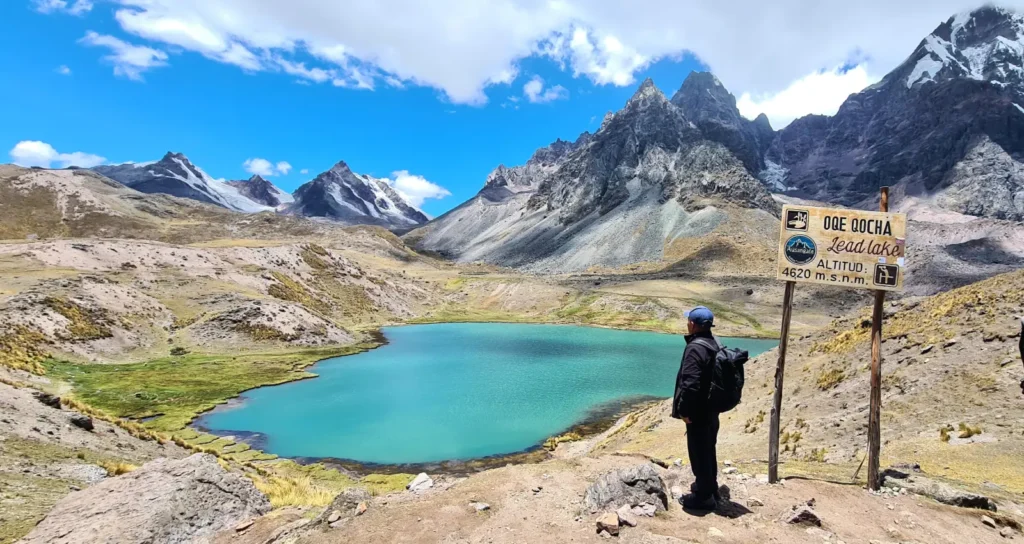
Contents
- 1 What is Ausangate trekking and why is it unique?
- 2 Trekking altitude: how to prepare for extreme altitude
- 3 How to get to Ausangate from Cusco: transportation and starting points
- 4 Colored lakes in Ausangate: names, meanings and where to find them
- 5 Animals you will find in Ausangate: vicuñas, condors and more
- 6 Andean communities of Ausangate: living culture and ancestral tradition
- 7 Weather and best time to do the Ausangate trekking
- 8 Essential tips before trekking Ausangate
- 9 Why Ausangate is not just a trek, but a life experience
What is Ausangate trekking and why is it unique?
The Ausangate trek is a trek of several days in the Peruvian Andes, around the sacred snow-capped mountain of Ausangate. It is no ordinary hike. It is a profound experience, surrounded by landscapes that seem unreal: brightly colored lagoons, snow-covered hills, Andean animals such as llamas and vicuñas, and communities that have preserved their traditions for centuries.
This spiritual and natural trail attracts travelers from all over the world who are looking for more than just tourism: they are looking for connection, silence, beauty and challenge. The Ausangate trek is not done in one day. It is experienced in several days. And whoever experiences it, will never be the same again.
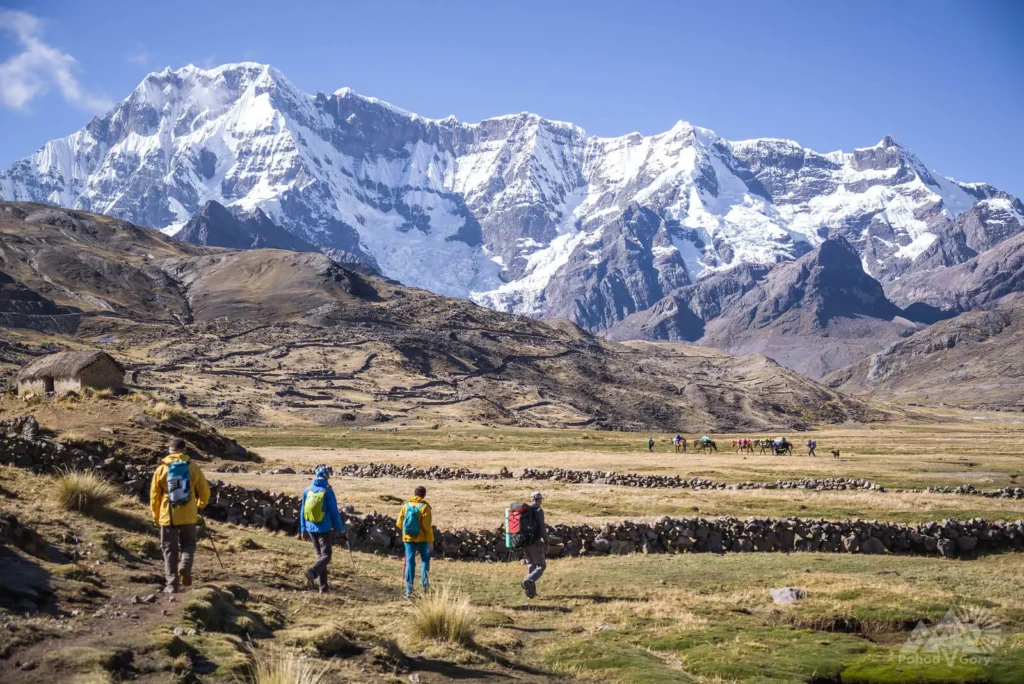
Trekking altitude: how to prepare for extreme altitude
This trekking takes place in a very high altitude area. The route passes through places ranging from 4,300 meters to 5,200 meters above sea level. The highest point is the Palomani pass, which is over 5,200 meters. That means the air has less oxygen, and your body needs time to get used to it.
It is very important to acclimatize before starting. It is recommended to spend at least two or three days in Cusco or in nearby towns such as Pitumarca or Tinqui, which are also at high altitude. Walking slowly, drinking plenty of water, eating light meals and avoiding alcohol helps a lot. Some people take coca tea or pills for altitude sickness, but the most important thing is to listen to your body. If you feel dizzy, with a headache or very tired, it is better to rest or go down a little.
The altitude of the Ausangate trek is one of its greatest challenges, but also one of its greatest lessons: it teaches you to go slowly, to breathe deeply, to respect your limits and to admire each step as an achievement.
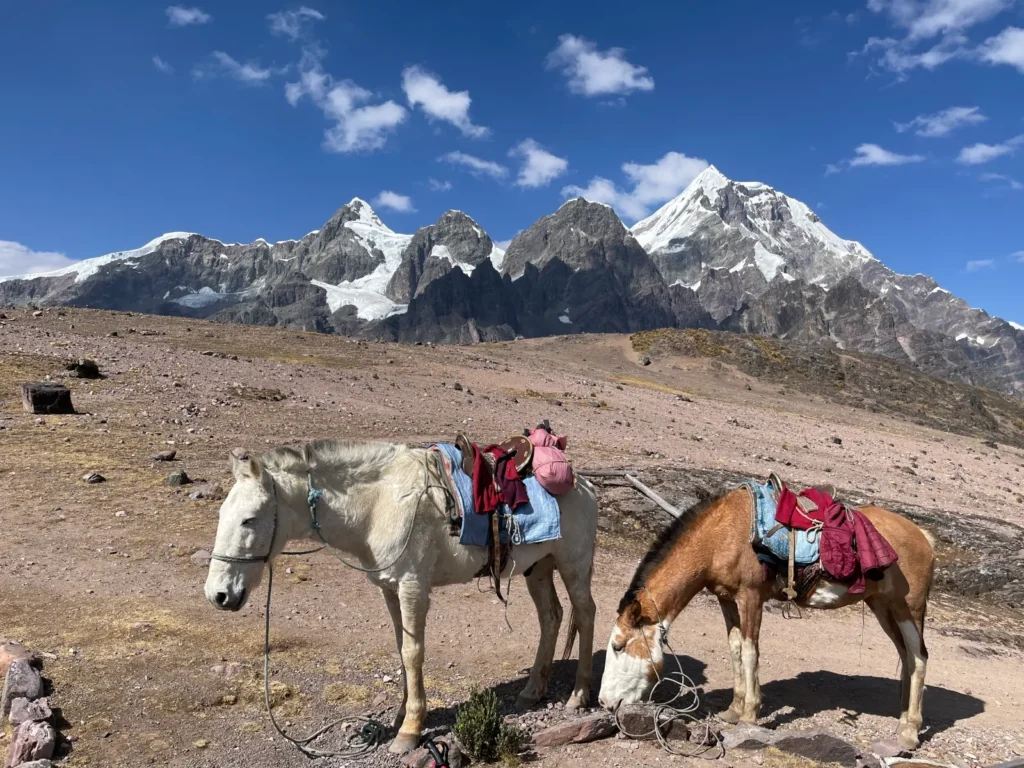
How to get to Ausangate from Cusco: transportation and starting points
The Ausangate trek generally starts in the village of Tinqui. To get there, you must first go to Cusco, which is the nearest city with an airport and services for tourists.
From Cusco, there are two ways to get to Tinqui:
The first is to take public transportation. You can go to the Cusco bus terminal and look for buses or colectivos that go south towards Sicuani. Tell the driver to drop you off in Tinqui. The trip takes between three and four hours, depending on traffic and the road. It is economical, but not always comfortable.
The second option is to hire a tour that includes transportation from Cusco. Many travel agencies in Cusco offer complete packages that include mobility, guide, food, tent and horses to carry the luggage. This is the most recommended option if you do not want to worry about the details or if you are traveling alone. In addition, the guides know the route very well and help you with acclimatization and safety.
Getting to Ausangate is not complicated, but it requires planning. Book in advance, especially if you are traveling in high season (June to August).
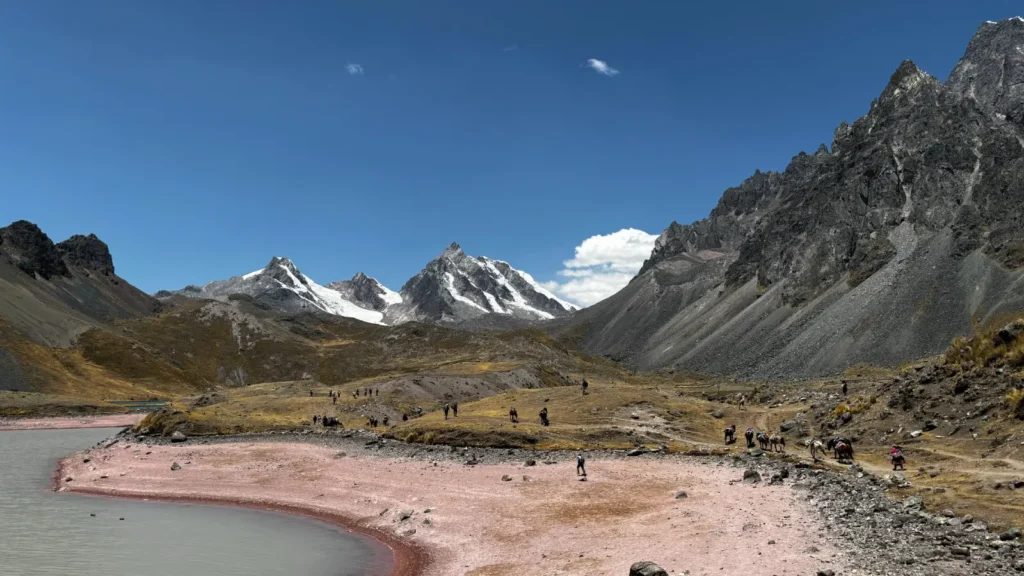
Colored lakes in Ausangate: names, meanings and where to find them
The Ausangate lakes are famous all over the world. They are not ordinary lakes. They have colors that seem invented: bright turquoise, emerald green, deep blue, even reddish or silvery depending on the time of day. This is due to the minerals in the water and at the bottom, and also to how the sunlight reflects on them.
Ausangatecocha Lagoon: the sacred mirror at the foot of the snow-capped peak
It is one of the first you encounter on the trek. It is right at the foot of the sacred mountain, surrounded by snow and rocks. The water is an intense blue and reflects the summit as if it were a mirror. It is a very spiritual place, where the Andean people make offerings.
Laguna de los Colores (Vinicunca): the rainbow mountain
Although it is technically close to Ausangate and not within the main trekking circuit, many tours include it as an extra visit. It is famous for its colorful stripes on the ground: red, yellow, green, white, purple. It looks like it was painted by an artist. It is over 5,000 meters and is best seen in the mornings, when the sun illuminates it completely.
Pucacocha and Yanacocha Lagoon: mystical red and green tones
Pucacocha means “red lagoon”. Its color changes depending on the day, but it often has reddish or orange tones due to the minerals in the soil. Yanacocha, which means “black lagoon”, actually has a dark green or deep blue color. Both are in quiet valleys, ideal for resting and admiring the reflection of the hills.
Orccococha Lagoon and Quimsachata: turquoise and Andean serenity
Orccococha is one of the largest in the circuit. It has a bright turquoise color that contrasts with the white snow of the nearby hills. Quimsachata is a set of small connected lakes, with green and blue waters, surrounded by three snow-capped peaks. It is a magical place, very quiet, perfect to sit and take a deep breath.
Animals you will find in Ausangate: vicuñas, condors and more
The wildlife here is special. There are not many large animals, but the ones that are here are unique and beautiful. Most are accustomed to the altitude and cold, and live free, unafraid of humans.
Alpacas and llamas: companions on the road
They are the most common. You will see them grazing in herds, cared for by shepherds who live in nearby communities. Alpacas have softer and shaggier wool, llamas are taller and stronger, and are used to carry things.
Vicuñas: wild elegance in the high Andes
They are wild relatives of alpacas. They are thinner, elegant, with long necks and a shy look. They are protected by law, because their wool is the finest in the world. If you see one, stand still and admire it in silence.
Condors and foxes: guardians of heaven and earth
Condors are the largest birds in the Andes. They fly very high, taking advantage of cold air currents. If you see one circling above you, many say it is a good sign that the mountain is blessing you. Andean foxes are small, agile, gray or reddish fur. They are shy, but if you walk slowly and quietly, they can sometimes be seen at dusk.
You can also see viscachas (they look like rabbits with squirrel tails), Andean ducks and even flamingos in some salt lakes. Yes, flamingos in the Andes!
Andean communities of Ausangate: living culture and ancestral tradition
People are a fundamental part of this place. They are not only inhabitants, they are guardians. They take care of the land, respect the mountain and keep alive traditions that come from the Incas and even more ancient cultures.
Tinqui: gateway to trekking
It is the starting point for most trekking. It is a small village, with stone houses and thatched roofs. Here you can buy snacks, hire mules or meet the local guides.
Upis and Pacchanta: hot springs and hospitality
Famous for its natural hot springs. After days of hiking, bathing here is a gift from heaven. The hot water comes out of the ground and mixes with the cold mountain air. An Andean luxury.
Jampa and Pucará: weaving, history and spirituality
Jampa is a wide valley, ideal for camping. The people are very friendly and sometimes share coca tea with hikers. Pucará has an old church and is famous for its colorful weavings and unique designs. If you want to buy an authentic souvenir, this is a good place.
In all these communities, people speak Quechua, grow potatoes and corn, raise animals and weave alpaca wool. They live with the bare essentials, but with an enormous spiritual richness. If you smile at them, they smile back. If you thank them, they invite you to sit down. If you respect their way of life, they open their world to you.
Weather and best time to do the Ausangate trekking
The weather in Ausangate is extreme. During the day it can be hot and sunny, but in minutes it can be cloudy, rainy, hail or snowy. At night, it is always very cold, even in summer.
The best time to go is between April and October. These are the dry months. The skies are clearer, the roads are firmer and there is less risk of storms.
June, July and August are the coldest months, but also the most stable. If you don’t mind the cold, this is the best season.
Between November and March is the rainy season. The roads become muddy, the rivers rise and the sky is cloudy. It is not recommended to trek in this season, unless you have a lot of experience and adequate equipment.
Essential tips before trekking Ausangate
- Don’t underestimate the altitude. Even if you are in good physical shape, the mountain tests you in a different way.
- Respect local customs. Ask permission before taking pictures of people, greet them politely and accept what they offer you with gratitude.
- Don’t leave trash behind. Everything you take with you, you bring back. Ausangate is sacred and we must take care of it.
- Wear layered clothing. In a single day you can go from hot to bitter cold.
- Don’t try to do it alone if you don’t have mountain experience. It is easy to get lost and the weather changes quickly.
- Carry cash in soles. There are no ATMs or cards on the road.
Why Ausangate is not just a trek, but a life experience
The Ausangate trek is not just a walk in the mountains. It is a journey to the heart of the Andes, to the essence of a living culture, to the pure beauty of untouched nature. It is to walk where few walk, to see what few see, to feel what few feel.
It doesn’t matter if you don’t reach the highest point. What matters is what you learn along the way: patience, respect, gratitude, strength. And when you return, you bring with you something that cannot be bought: the memory of a mountain that looked at you, tested you, and let you pass, with a lesson for life.
If you are looking for a real adventure, with soul and depth, Ausangate is waiting for you. Calmly, respectfully, with an open heart.


